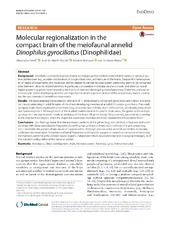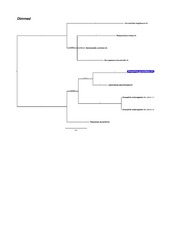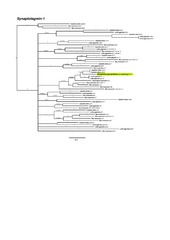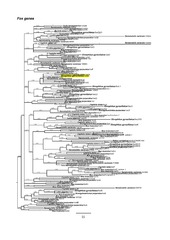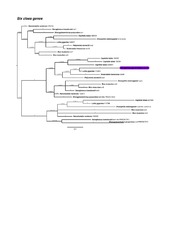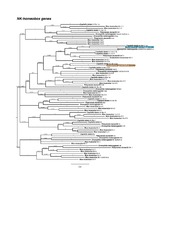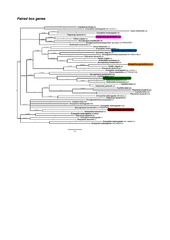| dc.description.abstract | Background: Annelida is a morphologically diverse animal group that exhibits a remarkable variety in nervous system architecture (e.g., number and location of longitudinal cords, architecture of the brain). Despite this heterogeneity of neural arrangements, the molecular profiles related to central nervous system patterning seem to be conserved even between distantly related annelids. In particular, comparative molecular studies on brain and anterior neural region patterning genes have focused so far mainly on indirect-developing macrofaunal taxa. Therefore, analyses on microscopic, direct-developing annelids are important to attain a general picture of the evolutionary events underlying the vast diversity of annelid neuroanatomy. Results: We have analyzed the expression domains of 11 evolutionarily conserved genes involved in brain and anterior neural patterning in adult females of the direct-developing meiofaunal annelid Dinophilus gyrociliatus. The small, compact brain shows expression of dimmed, foxg, goosecoid, homeobrain, nk2.1, orthodenticle, orthopedia, pax6, six3/6 and synaptotagmin-1. Although most of the studied markers localize to specific brain areas, the genes six3/6 and synaptotagmin- 1 are expressed in nearly all perikarya of the brain. All genes except for goosecoid, pax6 and nk2.2 overlap in the anterior brain region, while the respective expression domains are more separated in the posterior brain. Conclusions: Our findings reveal that the expression patterns of the genes foxg, orthodenticle, orthopedia and six3/6 correlate with those described in Platynereis dumerilii larvae, and homeobrain, nk2.1, orthodenticle and synaptotagmin- 1 resemble the pattern of late larvae of Capitella teleta. Although data on other annelids are limited, molecular similarities between adult Dinophilus and larval Platynereis and Capitella suggest an overall conservation of molecular mechanisms patterning the anterior neural regions, independent from developmental and ecological strategies, or of the size and configuration of the nervous system. | en_US |
